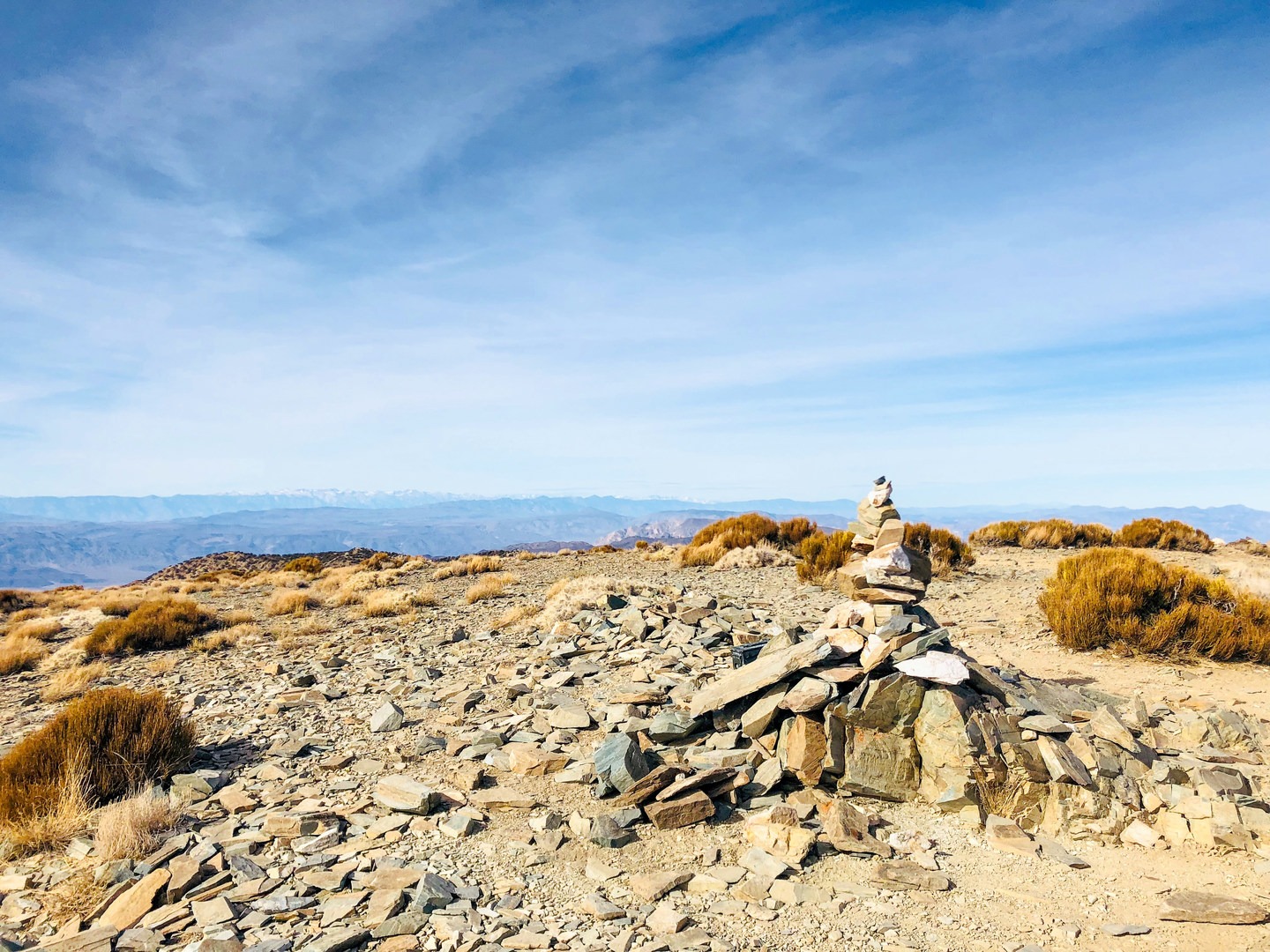Death Valley National Park typically conjures images of expansive saltflats and oppressive heat. However, it's also home to some high-desert hiking challenges, with Wildrose Peak in the Panamint Ranges one of the more accessible high-mountain trails.
The trailhead is at the base of the 10 unmissable Charcoal Kilns on Charcoal Kiln Road. The trail quickly leaves the road and winds around the bluff above the kilns, offering sweeping views down into Wildrose Canyon and beyond. As the trail continues to arc to the northeast, the morning hiker will enjoy some shade from both the hillside and the many piñyon trees that line the trail.
After a mile, the trail enters a dry gulch and the grade progressively increases from 5% to 20% or more. The switchbacks of the upper gulch eventually give way to the ridgeline and a welcome levelling of the trail. Glimpses through the thinning trees become more frequent as you traverse the ridgeline. The surrounding terrain also start to change as the earthier coverings of the gulch and earlier parts of the trail give way to a rock-heavy landscape with a few dogged piñyons. The last mile sees the trail's grade once again increase and the return of switchbacks. The trade-off for more uphill is ever-improving views into Death Valley. Then you abruptly hit the peak - or so it seems. A few more steps reveals you're at a false summit, and there is remaining quarter-mile to the true summit.
The Wildrose Peak summit offers truly breaktaking views. On a clear day you can look out the Mount Whitney in the Sierra as the highest point in the Lower 48 states, then pivot to view Badwater Basin, the lowest point in the continent. In between there is a bounty of panoramic views into this unique, expansive landscape. Take in the views and some water, sign the summit register, then retrace your steps back down to the trailhead.

























Comments
Sign In and share them.